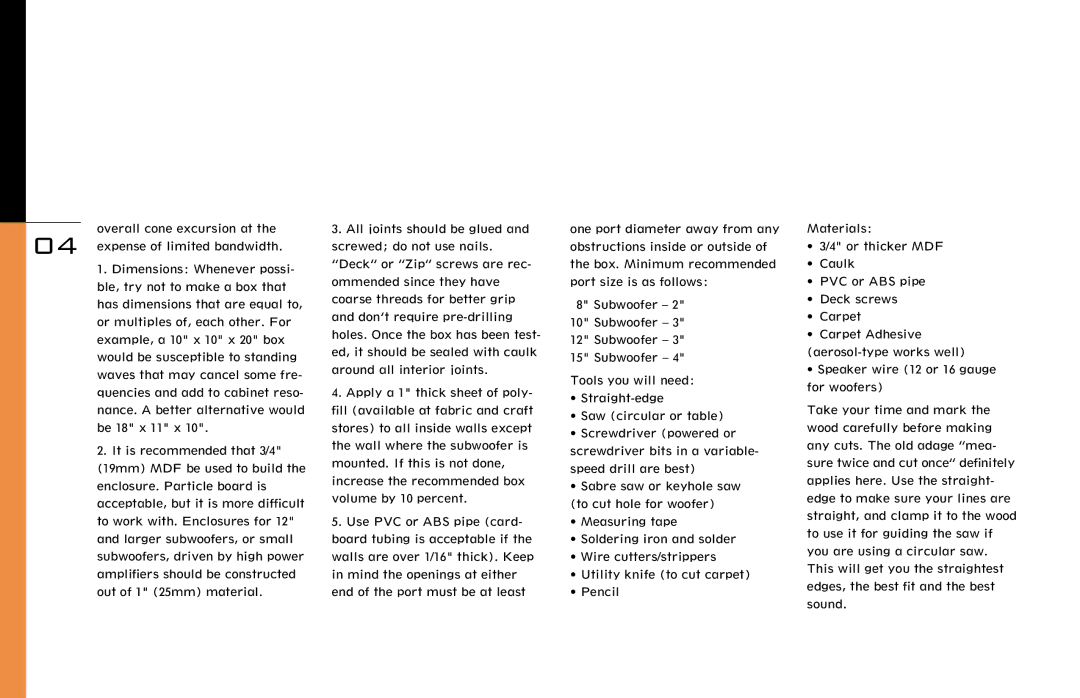P1500, P1200, P800, P1000 specifications
JBL, a renowned name in the audio industry, offers a remarkable range of professional audio systems, including the JBL P Series, consisting of models such as the P1000, P800, P1200, and P1500. Each of these speakers is engineered for exceptional sound quality, durability, and versatility, making them ideal for various applications, from live performances to home audio setups.The JBL P1000 model is crafted with a powerful 10-inch woofer and a high-frequency driver that provides a balanced sound across all frequency ranges. With its robust cabinet design, the P1000 minimizes unwanted resonance, ensuring clear and focused sound reproduction. This model is particularly suited for smaller venues, offering an excellent balance between volume and clarity, and its lightweight structure enhances portability.
Moving to the P800, this speaker features an 8-inch woofer that delivers impressive low frequencies, combined with a smooth high-frequency response from its tweeter. The P800 stands out for its compact size and versatility, making it perfect for both smaller gigs and studio monitoring. Its unique Prime Array technology allows for a wide dispersion pattern, ensuring that sound reaches every corner of the room, making it an excellent choice for dynamic performances.
The JBL P1200 ramps up the power with a 12-inch woofer, offering deeper bass and broader soundstage capabilities. This model is designed for musicians who require powerful sound reinforcement in larger spaces. The P1200 utilizes advanced compression driver technology, which enhances clarity and detail in vocal performances. Additionally, it is equipped with a durable enclosure designed to withstand the rigors of touring while maintaining aesthetic appeal.
Finally, the JBL P1500 is the flagship model of this series, featuring a 15-inch woofer that produces thunderous lows and impressive sound pressure levels. This model is perfect for professional DJs and bands, providing enough power to fill large venues. The P1500 includes advanced features such as built-in EQ settings and an optimized crossover network, ensuring that every frequency is reproduced with precision. Its heavy-duty construction guarantees reliability in demanding environments.
In summary, the JBL P Series, with models P1000, P800, P1200, and P1500, showcases a commitment to sound excellence and innovation. Each model caters to different needs and preferences while sharing core features like high-quality components, robust design, and superior sound performance, making them invaluable assets for audio professionals and enthusiasts alike.
